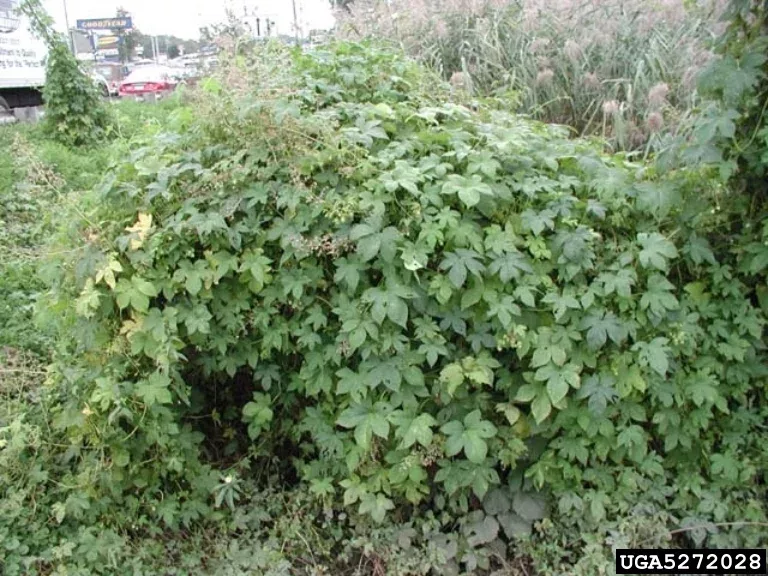
Japanese hop was originally imported to the U.S. in the late 1800s for use as an Asian tonic and ornamental vine. It is still sold for these purposes today. Common hop (Humulus lupulus) contains bitter acids and essential oils used for flavoring and as preservative in beer. The chemistry of Japanese hop is less desirable for that purpose.
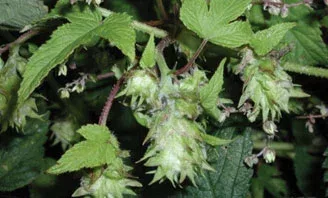
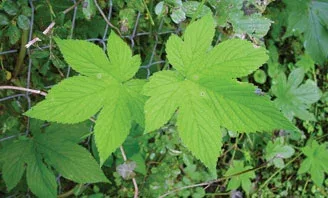

Appearance
Humulus japonicus is an annual, climbing or trailing vine that is native to eastern Asia. This vine has 5-lobed leaves (generally), downward pointing prickles on the stem and bracts at the base of the petioles.
Foliage
Leaves are opposite, rough, 2-5 in. (5-13 cm) long, 5-9 lobed with toothed margins. Most leaves will have five lobes, but the upper leaves may only have three.
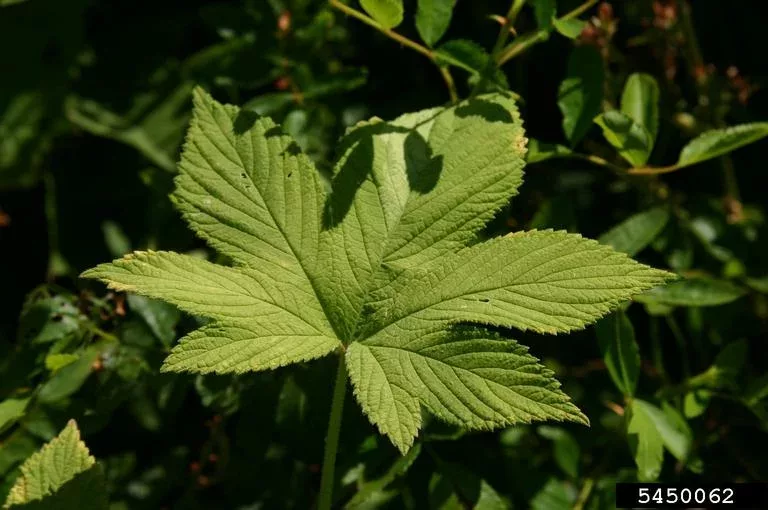
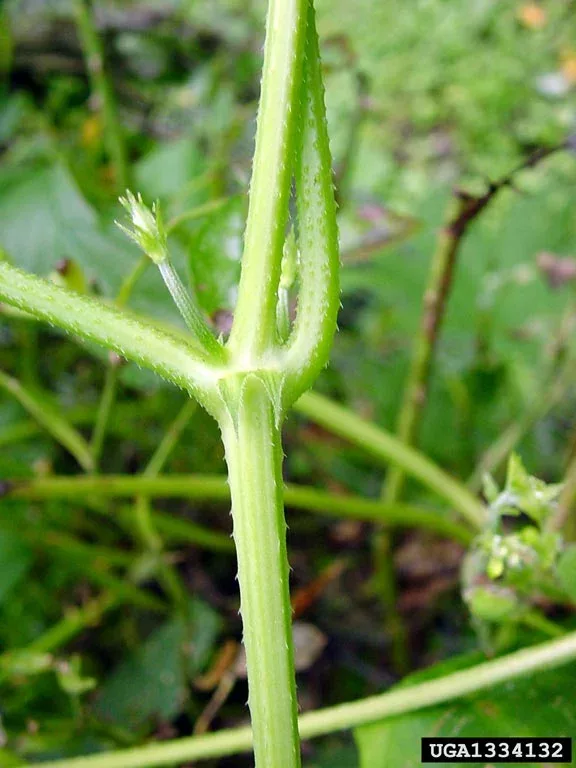
Flowers
Flowers originate in the leaf axils and are green with five petals. Male and female flowers occur on separate plants (dioecious). Female flowers occur in cone-shaped clusters that hang down and the male flowers occur in upright flower stems.
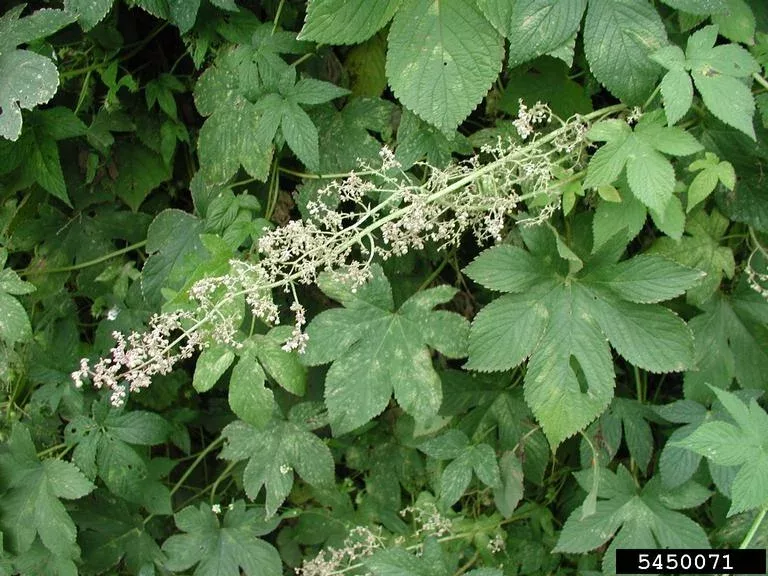
Fruit
Fruit is a yellow-brown ovoid achene. The small seeds are distributed by wind and water.

These vines can grow to 35 ft. (10.7 m) in one growing season, allowing them to infest large areas crowding and out competing native vegetation. Humulus japonicus was introduced into North America in the mid-to-late 1800s as an ornamental.
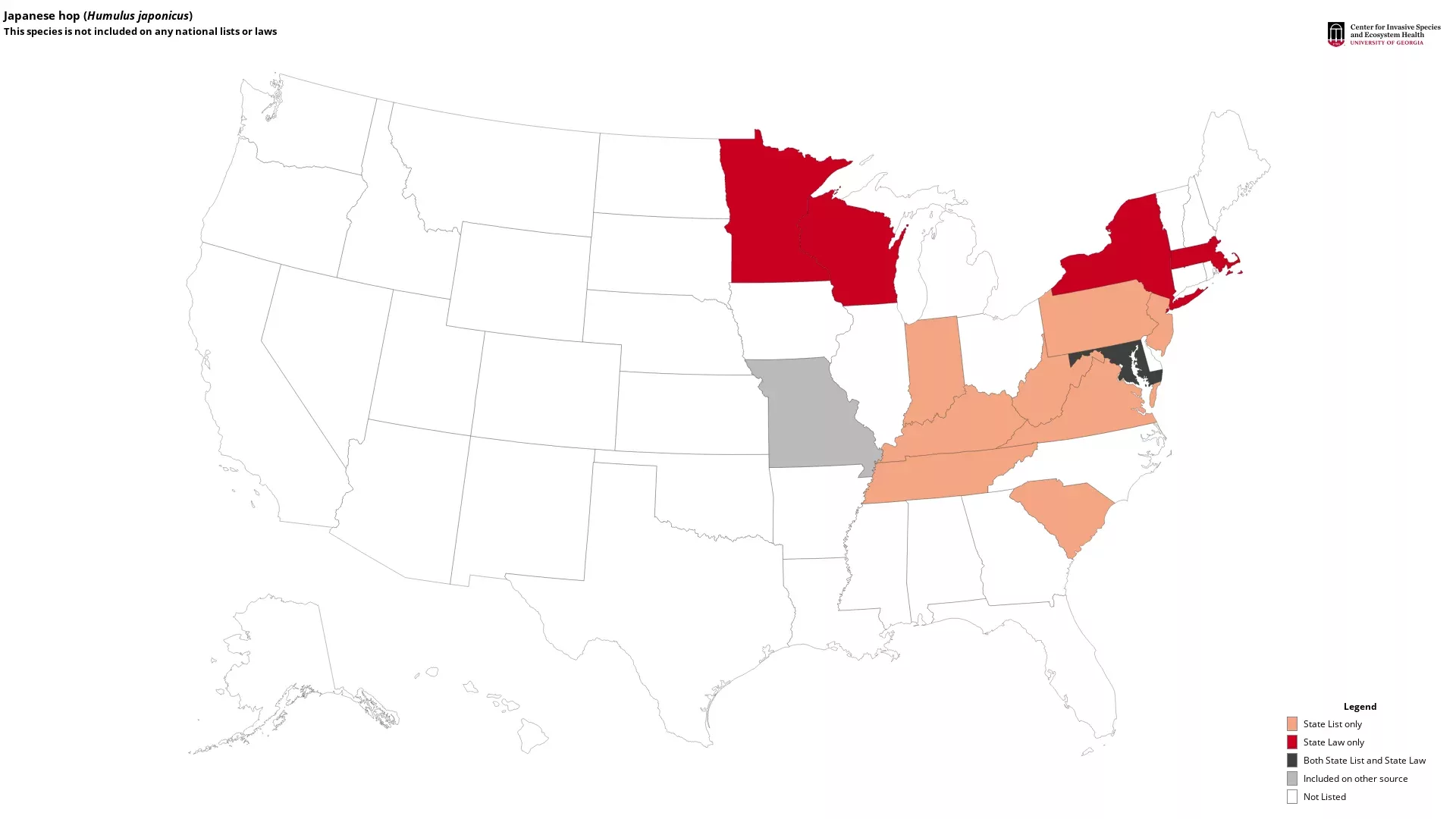
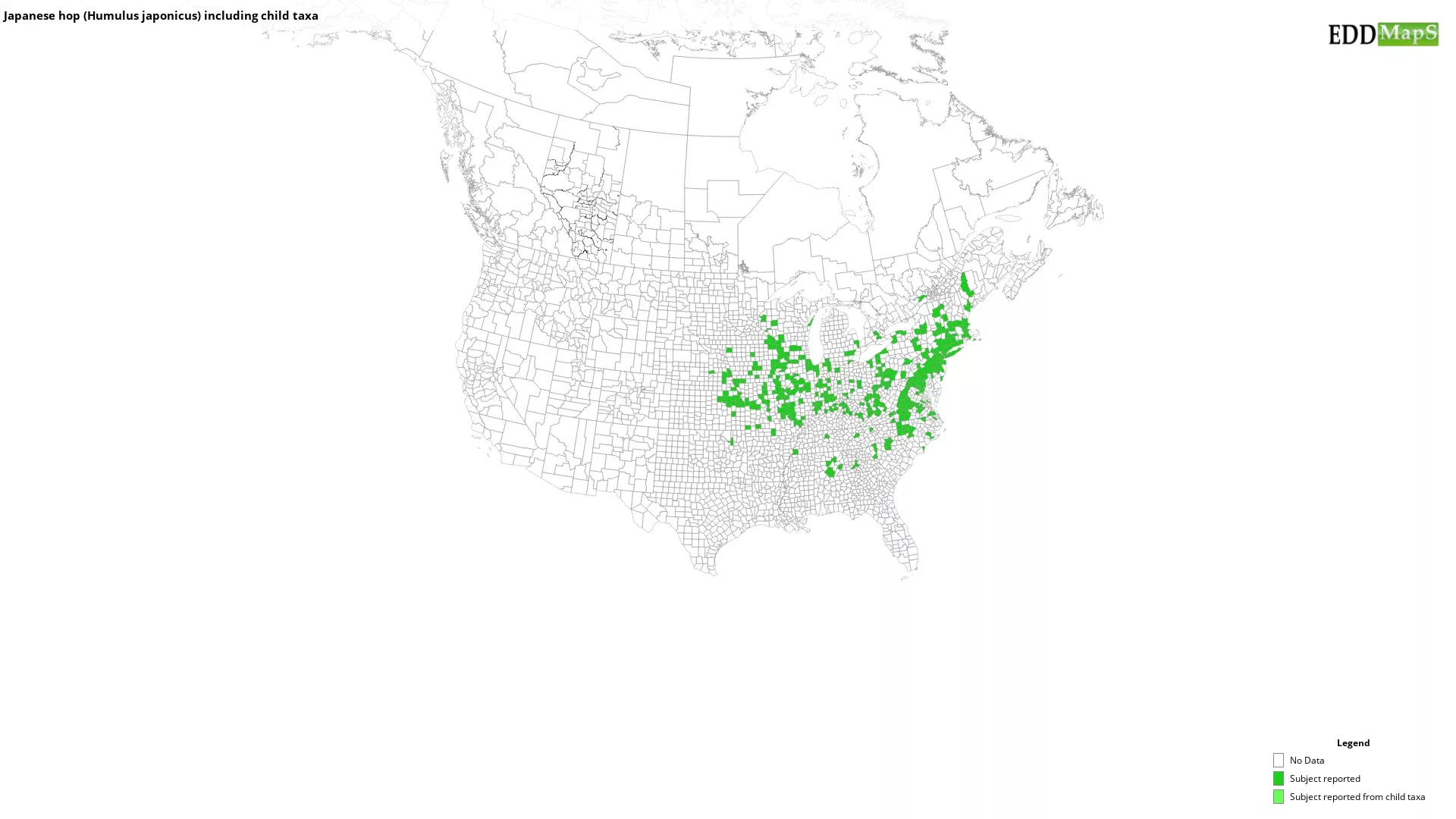

Japanese hop occurs in scattered locations from Nebraska to Maine to Georgia and is most common in the Northeastern U.S. and eastern Canada. It has been reported to be invasive in natural areas in Connecticut, Delaware, Indiana, Maryland, Pennsylvania, Virginia, and the District of Columbia. Japanese hop prefers plentiful sunlight and moisture, rich exposed soil, and is most commonly found along stream banks and floodplains. Growth is less vigorous in shade and on drier soils, but it can grow in disturbed areas with fairly moist soils, including roadsides, old fields, and forest edges. In milder climates, it can survive the winter.

Do not purchase, plant or transplant this species. Vines can be hand-pulled wearing gloves, long-sleeves and long pants and shoes to avoid injury from the prickles. Systemic herbicides are most effective (see Control Options).
